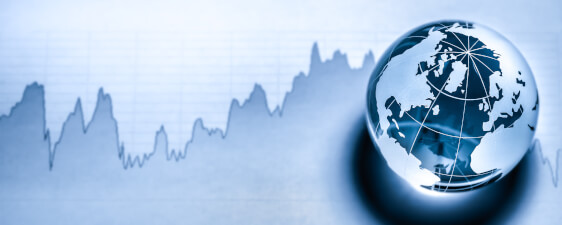With the release of Q2 data over the summer, the full extent of the impact COVID-19 has had on the global economy became apparent, as a succession of countries reported record falls in output, with lockdowns causing inevitable and acute economic disruption.
Although uncertainties surrounding the pandemic are still inflicting economic stress across the globe, there are signs that the worst may be over. Many economists believe the sharpest declines are now consigned to history, but the likely pace of recovery remains unclear.
On home shores
Preliminary Q2 gross domestic product (GDP) statistics show the UK economy was hit particularly hard, with a 20.4% reduction in output in Q2 compared with Q1. The country’s largest ever quarterly decline pushed the UK into its first technical recession since the financial crisis.
Around the globe
Output across the Eurozone shrank a record 12.1% during Q2, with Spain suffering the largest decline, its economy shrinking by 18.5%. France and Italy were also badly hit, with quarterly declines of 13.8% and 12.4%, respectively.
Preliminary estimates for the US suggest the world’s largest economy shrank at an annualised rate of 32.9% in Q2, the sharpest decline since government records began in 1947.
In Japan, the world’s third-largest economy, GDP fell by 7.8% in Q2, which represents the fastest quarterly rate of decline since” “comparable figures were first recorded back in 1980.
A tentative recovery?
Despite Q2 data for advanced economies painting a bleak picture, a recovery of some sorts may be in the offing. In the UK, the Office for National Statistics said the decline was concentrated in April at the height of lockdown, with the economy bouncing back in June as restrictions eased.
Recovery seems underway in China; the economy returned to growth during Q2, the world’s second-largest economy growing 3.2%. This follows a historic 6.8% Q1 slump, China’s first contraction since at least 1992 when records began.
The International Monetary Fund (IMF) predicts the global economy will shrink 4.9% this year, a downgrade from previous projections. This downgrade reflects the likelihood of social distancing restrictions persisting for a longer period and the subsequent impact on consumer spending. Voluntary social distancing by people wary of exposing themselves to the risk of infection is also expected to make consumers cautious.
“The strength of this recovery is highly uncertain”
Next year, the IMF predict the global economy will expand by 5.4%; however, they stress there is a higher-than-usual degree of uncertainty surrounding its predictions. IMF Chief Economist Gita Gopinath commented: “The strength of this recovery is highly uncertain. On the one hand, you could get positive news, you could have better news on vaccines and on treatments and greater policy support, and that can trigger a faster recovery. But on the other hand, there are important downside risks, too,” “which is that the virus could come back up. You could have financial tightening that could lead to debt distress. So, there are both upsides and downsides.”
It seems the only real certainty at the moment is that these are likely to remain uncertain times. Rest assured, we remain on hand to navigate any uncertainty together.”
The value of investments can go down as well as up and you may not get back the full amount you invested. The past is not a guide to future performance and past performance may not necessarily be repeated.











